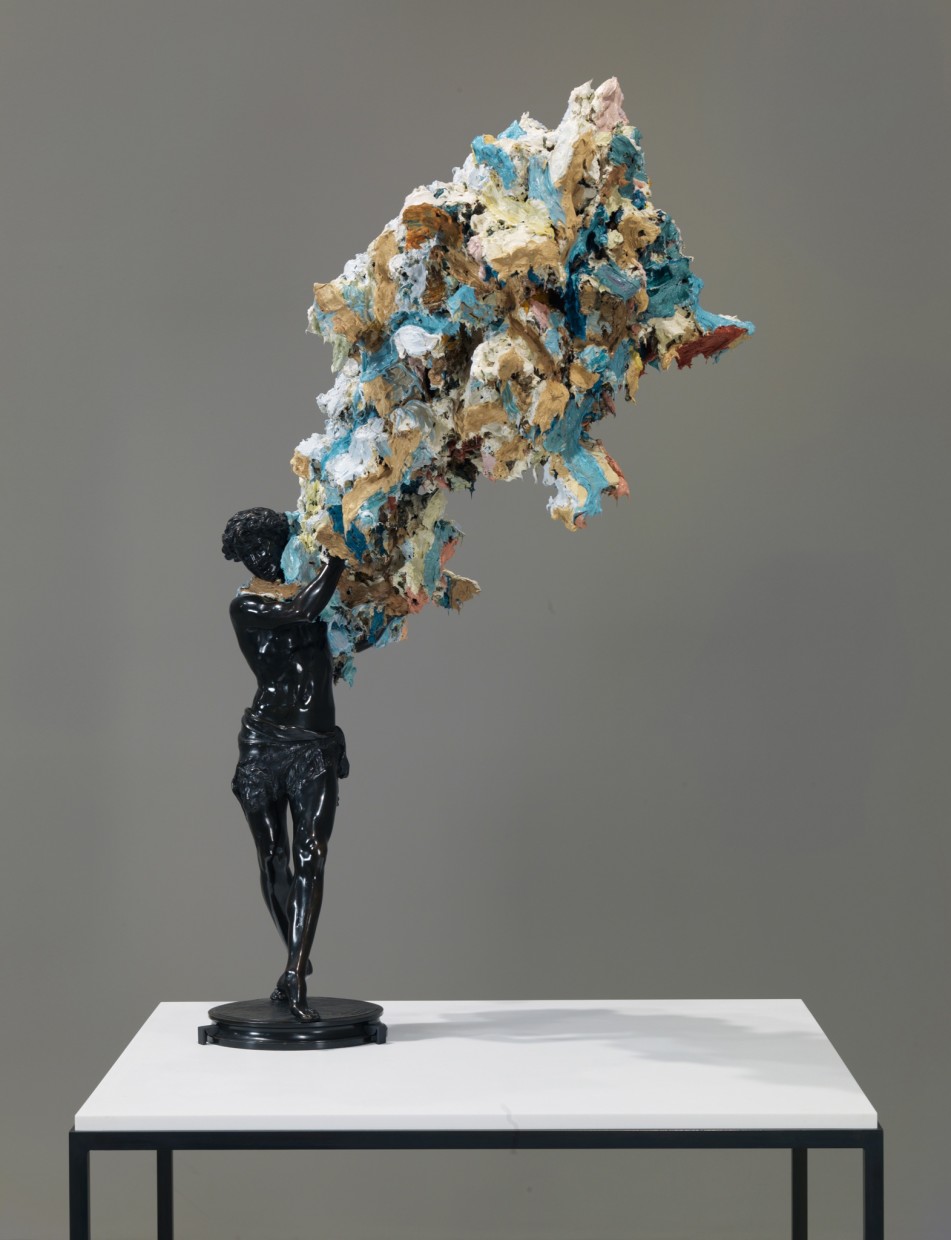In this work Brown uses a 19th century Italian bronze statuette as the armature for a sculpture whose title and color palette are inspired by Italian painter and printmaker Giovanni Battista Tiepolo (1696-1770). At a time when he was one of the few European painters still working on a monumental scale, King Charles III of Spain commissioned Tiepolo and his sons in 1762 to paint the Throne Room of the Royal Palace in Madrid. For the next four years (1762-1766) they portrayed the glorification of the Spanish empire in the most aggrandizing and ostentatious of ways. The loading of a European ship with the treasures of the American continent is depicted in a direct allusion to the discovery of America by Christopher Columbus and to the Spanish conquest of the New World in the 16th century. The two Indians in the foreground, who throw themselves to the ground in front of the ship, symbolize the Europeans' victory over the natives. The grounds for this type of grandeur, as well as Tiepolo’s life, would soon be over after this period – but in Brown’s work the legacy is still held aloft. And while the apotheosis of Spanish colonization was dwindling by the 19th century, by sheathing a now obscured part of the bronze statue with oil paint Brown makes the physical (and political) weight of paint feel surprisingly lighter and more “airy.”
– Steven Matijcio, Curator, Contemporary Arts Center, Cincinnati, USA
